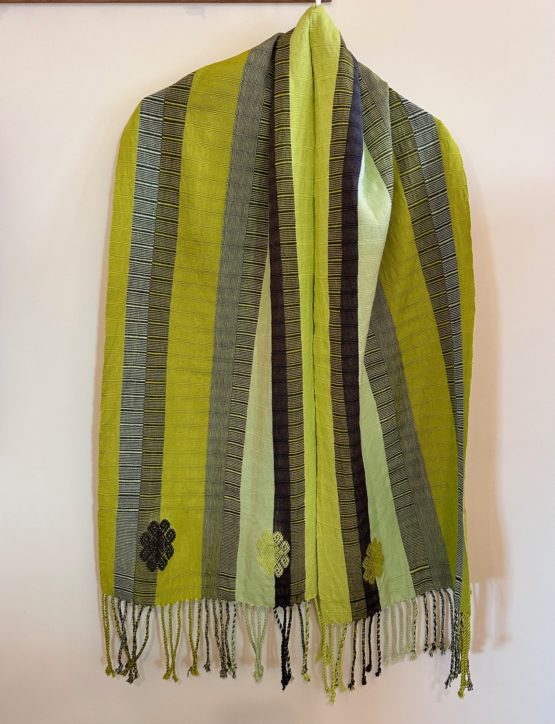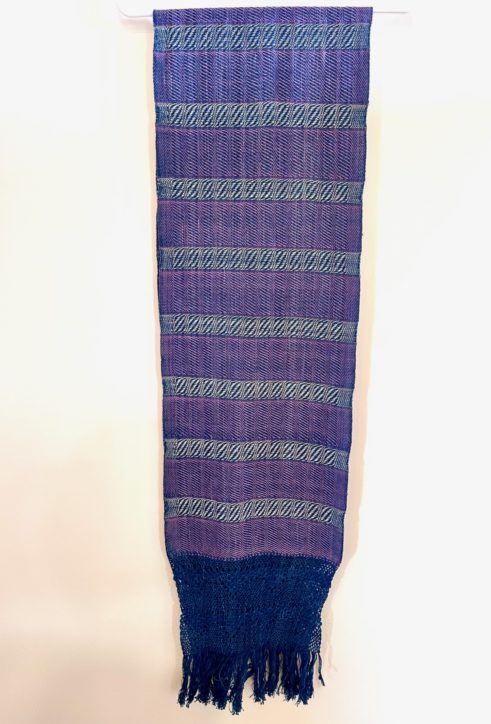This week I was asked to provide an expert opinion on the feasibility of a project proposed to the Rolex Awards Young Laureate program by a young Oaxaca woman who has been working in social action and community development. Here is how I responded. Her goal is to create a sustainable agriculture program to help women gain economic independence. Here is my response. Cochineal is a small production crop that is very labor intensive. Over the past hundred years, small production cochineal farms have disappeared as the use of highly toxic chemical dyes have been employed by the local population to dye textiles and other products. This project is original because it would focus on women, provide employment, and contribute to sustainable agriculture and economic development through new product innovation. It would have a huge impact on villages and families, and their economic well-being. I know of no other venture or initiative of this type in the Oaxaca valley, and it is feasible because of the way Zapotec communities are organized ... around the principles of group support through mutual endeavors. It is also an important project because it re-emphasizes the value that cochineal has as part of the indigenous culture, and because it is an organic compound that contributes to better health. In many villages that use chemical dyes, people have lung diseases and cancer because they breathe toxic fumes in the dyeing process. By supporting cochineal as a preferred dye stuff, much can be done to reduce health hazards related to chemical dye use. I know of no other project like this in Oaxaca. Many women in rural Oaxaca villages have lost their primary means of support because the men in their families have migrated to other parts of Mexico or the U.S. to work. A project of this type would give women the self-esteem and economic independence they need and deserve, and provide a collaborate community for mutual support. I believe it to be an important endeavor to raise the standard of living in many Oaxaca villages. Many weavers in Oaxaca are adopting the use of cochineal in their dye process. Collectors of fine textiles prefer cochineal to chemical dyes. If production increases through a project like this, then perhaps the price of cochineal can come down making it more accessible to more weavers. Having the product readily available for sale in many weaving villages throughout the state would help in the marketing. I have not heard about the recent studies regarding any harmful side effects of cochineal, so I cannot comment on that. I do know that it is used quite successfully in dyeing beverages, lipstick, and other edible products. It is the preferred RED for dyeing wool rugs in Teotitlan del Valle, and huipiles that are made throughout Oaxaca. I recommend that you support the applicant of this proposal.
Search by Topic
Stay Connected!
LIKE Us on Facebook!
Social Media Connections
-
Connect: email, text or WhatsApp +1-919-274-6194, FB Messenger, IG
-
Why Travel With Us: We Are Cultural Educators
-
- We know the culture! We are locally owned and operated.
- Eric Chavez Santiago is Zapotec, born and raised in Teotitlan del Valle, Oaxaca.
- Norma Schafer has been living in Oaxaca for almost 20 years.
- We have deep connections with artists and artisans.
- 63% of our travelers repeat -- high ratings, high satisfaction.
- Wide ranging expertise: textiles, folk art, pottery, cultural wisdom.
- We give you a deep immersion to best know Oaxaca and Mexico.
-
Creating Connection and Meaning between travelers and with indigenous artisans. Meet makers where they live and work. Join small groups of like-minded explorers. Go deep into remote villages. Gain insights. Support cultural heritage and sustainable traditions ie. hand weaving and natural dyeing. Create value and memories. Enjoy hands-on experiences. Make a difference.
-
What is a Study Tour: Our programs are learning experiences, and as such we talk with makers about how and why they create, what is meaningful to them, the ancient history of patterning and design, use of color, tradition and innovation, values and cultural continuity, and the social context within which they work. First and foremost, we are educators. Norma worked in top US universities for over 35 years and Eric founded the education department at Oaxaca’s textile museum. We create connection.
-

-
OCN Creates Student Scholarship at Oaxaca Learning Center Giving back is a core value. Read about it here!
Why We Left, Expat Anthology: Norma’s Personal Essay
We Contribute Two Chapters!
-
Meet Makers. Make a Difference
-
Oaxaca Cultural Navigator LLC has offered programs in Mexico since 2006. We have over 30 years of university, textile and artisan development experience. See About Us.
-
Programs can be scheduled to meet your independent travel plans. Send us your available dates.
-
Designers, retailers, wholesalers, curators, universities and others come to us to develop artisan relationships, customized itineraries, study abroad programs, meetings and conferences. It's our pleasure to make arrangements.
-
Select Clients *Abeja Boutique, Houston *Selvedge Magazine-London, UK *Esprit Travel and Tours *Penland School of Crafts *North Carolina State University *WARP Weave a Real Peace *Methodist University *MINNA-Goods *Smockingbird Kids *University of North Carolina at Chapel Hill
-
Tell us how we can put a program together for you! Send an email norma.schafer@icloud.com
PRESS
- WEAVE Podcast: Oaxaca Coast Textiles & Tour
- NY Times, Weavers Embrace Natural Dye Alternatives
- NY Times, Open Thread–Style News
- NY Times, 36-Hours: Oaxaca, Mexico
Our Favorites
- Cooking Classes–El Sabor Zapoteco
- Currency Converter
- Fe y Lola Rugs by Chavez Santiago Family
- Friends of Oaxaca Folk Art
- Hoofing It In Oaxaca Hikes
- Living Textiles of Mexico
- Mexican Indigenous Textiles Project
- Museo Textil de Oaxaca
- Oaxaca Lending Library
- Oaxaca Weather
- Taller Teñido a Mano Natural Dyes







6 responses to “Cochineal Bugs For Job Creation”